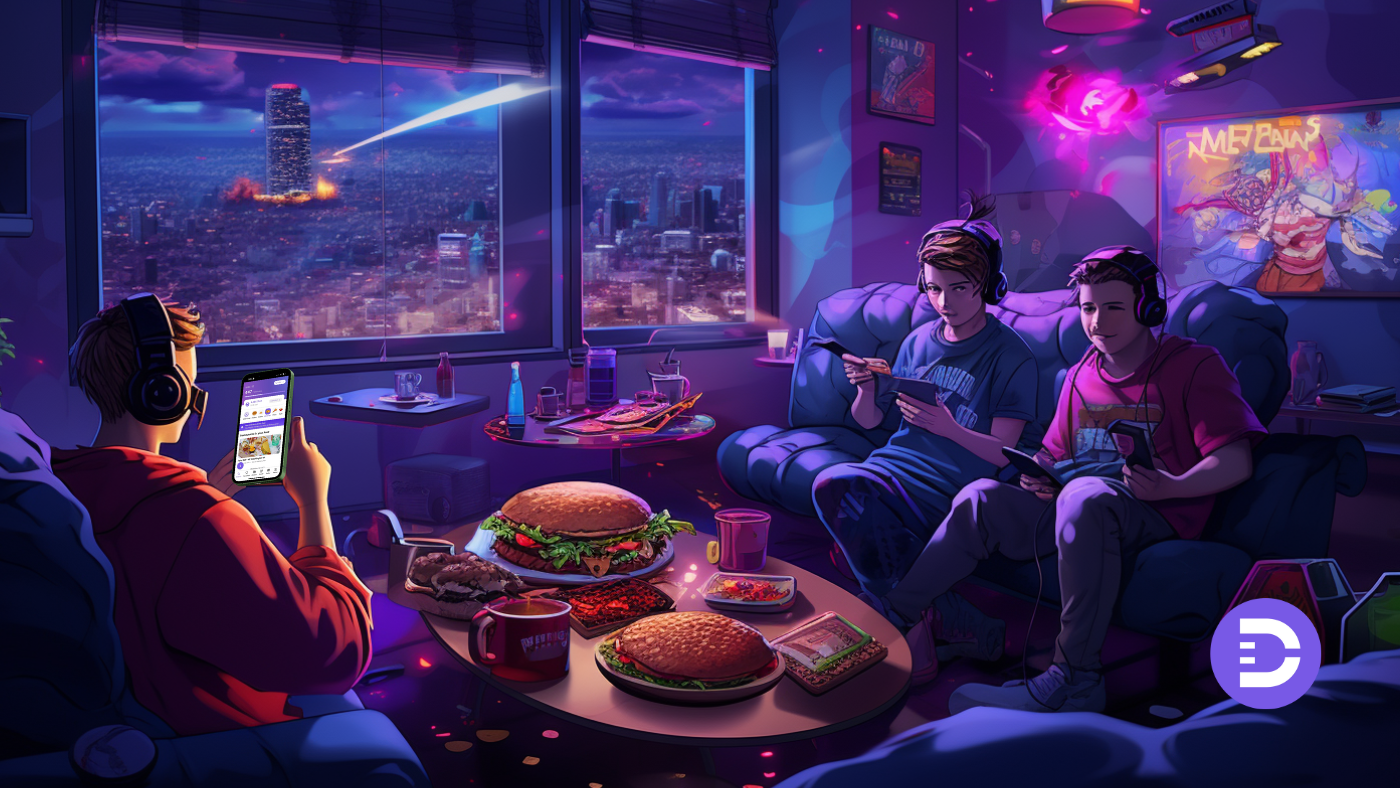A unique trend is reshaping consumer engagement: the fusion of online food ordering with video gaming. This synergy offers a promising avenue to reach Gen Z, a demographic deeply ingrained in digital and gaming cultures.
Remember the early 2000’s? This was a time when video games and food were just getting started. Let's trace this journey back to its origin story: EverQuest II's innovative /pizza command, a novel concept that seamlessly linked virtual adventures with real-world pizza delivery.
The Pioneers – EverQuest II and Pizza Hut
The /pizza command, launched in 2005, was a pioneering initiative by Sony Online Entertainment. Players could type this command to open a web browser to the Pizza Hut ordering page, blurring the lines between gaming and real-world utility. This feature was not only innovative for its time but also marked the beginning of a unique fusion between the gaming industry and food services, but it would take a while.
Broadening the Playing Field – Early Adopters
As this concept gained traction, other brands began exploring similar partnerships. GrubHub's collaboration with Ubisoft's Just Dance 2017 ingeniously asked gamers to share their "doorbell delivery dance," combining gaming excitement with food ordering. PepsiCo, through its GameFuel campaigns, successfully tied its beverage promotions to major game releases like Call of Duty, offering in-game perks. Taco Bell and PlayStation's partnership, particularly through sweepstakes and giveaways, further solidified the bond between gaming and gastronomy.
Innovating Engagement – Creative Collaborations
Innovative campaigns continued to emerge. Doritos engaged gamers with sweepstakes, offering rewards like Xbox consoles and game memberships. Pizza Hut, for the launch of Halo 4, not only themed their pizzas around the game but also collaborated with influencers to amplify their reach. Totino's took a more relaxed approach with their "Live Free, Couch Hard" campaign, embracing their identity as a laid-back snack perfect for gaming sessions.
The Rise of eSports and Food Marketing
The emergence of eSports opened new avenues for food marketing. General Mills, via Totino's, sponsored eSports events and integrated their products into gaming channels, resonating with the eSports community. This approach highlighted the importance of aligning with Gen Z's interests, particularly in competitive gaming arenas.
The Power of Gen Z – Understanding the Market
Gen Z, with its substantial spending power and profound influence on cultural trends, is an essential market for these collaborations. Statistics show that over 90% of Gen Z engages in gaming, and a significant portion prefers online food ordering. Aligning brand values with this demographic’s expectations—such as sustainability and authenticity—is crucial for effective engagement.
Gen Z, particularly teens aged 14 to 19, are heavily invested in gaming, with 27% citing it as their favorite entertainment activity. Moreover, 70% of Gen Z teen gamers say gaming helps them stay connected socially, indicating the deep emotional and social ties they have with this activity. Male teens, in particular, play an average of 12 hours per week and place high importance on social connections made through gaming.
Amid the pandemic, Gen Z's transition to adulthood saw a natural shift towards online food ordering, a behavior now ingrained in their lifestyle. This generation, pressed for time due to work and college commitments, turns to online ordering for convenience, making them a prime audience for digital food marketing initiatives.
Understanding these trends, restaurant brands can develop targeted strategies that align with Gen Z's gaming habits and preferences for online food ordering. Whether through in-game promotions, partnerships with gaming platforms, or creative digital marketing campaigns, the opportunities to engage this tech-savvy generation are vast.
Learning from the Past – Key Takeaways for Future Campaigns
Past campaigns reveal vital insights:
- successful brand collaborations often involve creative engagement strategies,
- align with gaming culture, and
- offer tangible benefits to the gamers.
The key is to blend the gaming experience with food ordering in a way that enhances, rather than interrupts, the gaming journey. Web3, with its ability to use NFTs (non-fungilble tokens) unlocking special perks, are especially popular with gamers as those are often very much a part of their in-game experience.
Looking Ahead – Future Opportunities and Trends
As we look to the future, augmented reality (AR), virtual reality (VR), and more immersive gaming experiences present new opportunities for food brands. Imagine ordering food through voice commands in a VR game or participating in a game-themed AR experience at a restaurant. The possibilities are as limitless as the technology and creativity driving them.
_ - _ - _
The integration of food ordering and video games is more than a fleeting trend—it’s a growing frontier offering substantial opportunities for restaurant brands, especially in engaging with Gen Z. As the digital landscape evolves, so does the potential for innovative, engaging, and mutually beneficial collaborations between these two industries.
This is one of those rare times in our industry’s storied history where we get to choose our own adventure! We invite you to join the discussion. Share your thoughts, experiences, or potential ideas for gaming and restaurant brand collaborations. Join us!
